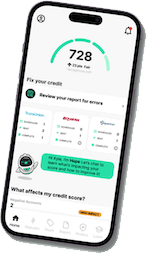Documents Needed for Mortgage Pre-Approval: A Quick Guide

Getting pre-approved is one of the most important steps in the homebuying process—it shows sellers you’re serious and helps you understand how much house you can afford. This guide walks you through everything you need for mortgage pre-approval, including a full document checklist, tips to avoid delays, and how to boost your credit score with tools like Dovly AI. Let’s get you one step closer to the keys.
So, you’re ready to take the leap into homeownership? Whether you’re a first-time buyer or refinancing, getting pre-approved for a mortgage is your first big step in the mortgage process. Not only does it show sellers you’re serious—it helps you know exactly what you can afford.
But what documents do you need for the mortgage pre-approval process when looking for a home loan? And how can you speed up the process? We’ve got the full mortgage pre-approval checklist, step-by-step guidance, and tips on how to boost your credit to lock in the best rates.
Documents Needed for Mortgage Pre-Approval
Personal Identification Documents
These confirm your identity and legal status in the U.S.
- Government-issued photo ID (driver’s license or passport)
- Social Security number (or Individual Taxpayer Identification Number)
- Green card or work visa (if you’re a non-U.S. citizen)
Income Verification
Lenders need to see proof of consistent monthly income to assess your ability to make mortgage payments and verify your financial situation. Bank account statements can also verify the deposits.
If you’re a W-2 employee:
- Recent pay stubs from the past 30 days
- W-2 forms from the past two years
- Optional: A letter from your employer confirming your position and salary
If you’re self-employed or an independent contractor:
- Two years of full personal and business tax returns (with all schedules)
- 1099 forms (if applicable)
- Year-to-date profit and loss statement
- Business license or CPA letter verifying self-employment
Other Salary Sources (if applicable):
- Social Security or pension award letters
- Alimony or child support documentation (legal orders plus proof of consistent payment)
- Rental Earnings (lease agreements and tax forms showing reported rental earnings)
Asset Verification
Lenders want to ensure you have enough saved for a down payment, closing costs, and cash reserves. This also gives additional insight into your financial situation.
- Bank statements from the past two months (checking and savings)
- Statements from retirement accounts (401(k), IRA) or investment accounts
- Gift letter (if someone is gifting you part of the down payment)
- Must state the funds are a gift, not a loan
- Proof of asset sale (e.g., vehicle title and bill of sale if you’re using proceeds from a sale)
Debt and Liability Documentation
Documentation regarding monthly debt payments is used to calculate your debt-to-income (DTI) ratio, which helps lenders gauge how much of your income goes toward debt.
- Bank statements for credit cards, student loans, car loans, personal loans
- Monthly payment amounts and current balances for each account
- Documentation for any court-ordered debt (e.g., alimony, child support)
Credit Report Authorization
Most lenders will pull this directly, but you’ll need to give consent.
- Signed authorization to run your credit
- Optionally, a recent report if you’ve pulled your own
- Be prepared to explain any late payments, collections, or disputes
Property Information (If You’ve Found a Home)
Not required for pre-approval but necessary later in the loan process.
- Signed purchase agreement or offer letter
- MLS listing
- Property tax estimate and homeowner’s insurance quote
Additional or Special Case Documents
Depending on your unique situation, your lender might also ask for:
- Divorce decree (if applicable)
- Bankruptcy discharge paperwork
- Explanations for large or unusual bank deposits
- Letters of explanation for gaps in employment or changes in income
Pro Tip:
Make sure all documents are official (no screenshots), legible, and up-to-date. Bank and income statements should include your name, account number, and institution logo. If something seems unclear, the lender may ask for additional documentation or clarification, so it helps to stay organized and be ready to respond quickly.
What Is Mortgage Pre-Approval and Why Does It Matter?
Mortgage pre-approval is an official document from a lender stating that you qualify for a home loan up to a specific amount. Unlike pre-qualification, which is based on self-reported information, pre-approval is more reliable since it’s based on a thorough review of your financial background, including your credit score, income, and debt to qualify you for a home loan.
Mortgage pre-approval serves two main purposes:
- Confidence for You: It gives you a clear idea of how much home you can afford, helping narrow down your search.
- Confidence for Sellers: It shows sellers that you’re a serious buyer with the financial backing to make an offer.
Mortgage pre-approvals typically last 60-90 days. After that, you may need to update your documents and apply for a new pre-approval letter if you haven’t purchased a home yet.
How to Get Pre-Approved for a Mortgage in 5 Steps
The mortgage pre-approval process may seem daunting at first, but it’s actually quite straightforward. Here’s a breakdown of the five main steps:
Step 1: Submit Your Mortgage Application
The first step is submitting your mortgage application. This will include providing your personal information, financial details, and documents like those mentioned above.
Step 2: Lender Reviews Your Application
Once your mortgage application is submitted, the lender will review your credit score, debt-to-income ratio, and other financial details to determine your eligibility for pre-approval.
Step 3: Provide Additional Documents
If the lender needs more information or documentation, they will reach out to you. This could include things like more detailed tax returns, proof of additional income, or clarification about your debts.
Step 4: Receive Your Pre-Approval Letter
Once everything checks out, you’ll receive a pre-approval letter. This letter will include the amount you’re approved to borrow and any other important terms.
Step 5: Shop for Homes
With your pre-approval in hand, you’re ready to start house-hunting! The pre-approval letter makes you a more attractive buyer to sellers, which can give you a competitive edge in the market.
Common Mistakes to Avoid During Pre-Approval
While the process is fairly simple, a few common mistakes can delay your pre-approval:
- Don’t make big purchases: Avoid buying a car or taking out any new loans during this time.
- Don’t switch jobs: Lenders like stability, so stay in your current job until after you’re approved.
- Don’t neglect your credit: Pay attention to your credit during the process, as your credit history can affect your approval.
What Credit Score Do You Need for Mortgage Pre-Approval?
Your credit score plays a huge role in how much you’re approved for—and at what interest rate. Generally speaking:
- 620 is the minimum for most conventional loans
- 580 can qualify you for certain FHA loans
- 740+ typically earns you the best interest rates
But here’s the thing: higher score = better terms. A small improvement in your score could save you thousands over the life of your loan.
That’s why it’s worth checking your score early and putting in the work to improve it before submitting your mortgage application. Tools like Dovly can help identify what’s hurting your score and give you a personalized roadmap to fix it.
How to Improve Your Credit Report Before Applying
If your score isn’t quite where you want it to be, don’t stress—there are strategic ways to raise it:
- Dispute errors on your report (Dovly can automate this for you)
- Pay down revolving debt, especially card balances
- Avoid opening new accounts too close to applying
- Make all payments on time, even utilities or subscriptions
- Don’t close old accounts, as credit age matters

How Dovly AI Helps You Get Pre-Approved Faster
Improving your credit is one of the smartest things you can do before submitting a mortgage application—and Dovly makes it easy. We’re not just another monitoring app. Dovly is an automated credit improvement platform that helps you:
- Dispute outdated or inaccurate items with ease
- Monitor your report and score, and track changes in real time
- Get personalized tips to raise your score faster
And now with our mortgage engine, you’ll also get:
- A custom roadmap to mortgage readiness
- Real-time insights into your loan eligibility
- Guidance tailored to your credit report and homeownership goals
Thousands of members have used Dovly to boost their score and fast-track mortgage approval.
Conclusion
Getting pre-approved for a mortgage is an essential step in the homebuying process. By gathering the right documents and understanding the pre-approval process, you can confidently step into the housing market and make your dream home a reality.
Remember, Dovly is here to help you get your credit ready for pre-approval. With our credit optimization tools, we make the process easier and faster. And when you’re ready to take the next step, we’ve partnered with Mortgage Research Center to help you find trusted mortgage solutions. Start today, and take the first step toward homeownership!
Ready to boost your credit and get mortgage-ready? Start with Dovly for free →
Check your score, get your custom roadmap, and reach pre-approval faster.
Frequently Asked Questions




